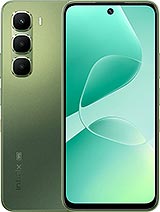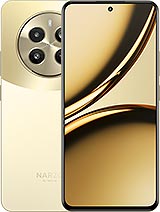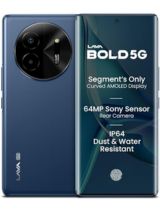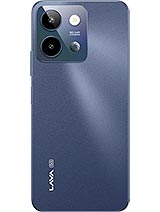Infinix Hot 60 alternatives
Tap above to see alternatives.
Lava Yuva 4 4G alternatives
Tap above to see alternatives.
Infinix Hot 60

Infinix Hot 60
-
Dimensity 7020
6 nm
-
5200 mAh
18W
-
6.7"
720 x 1600 pixels
-
50 MP
1440p@30fps
- Specs
Lava Yuva 4 4G

Lava Yuva 4 4G
-
Unisoc T606
12 nm
-
5000 mAh
10W
-
6.56"
720 x 1612 pixels
-
50 MP
1080p@30fps
- Specs
2x2.2 GHz Cortex-A78
6x2.0 GHz Cortex-A55
2x1.6 GHz Cortex-A75
6x1.6 GHz Cortex-A55
4GB 128GB (UFS 2.2)
f/1.6, (wide), AF
+1 unspecified camera
(wide), AF
VGA
Auxiliary lens
1080p@30/60/120fps
f/2.0, (wide), 1/4.0"
SIM1: Nano, SIM2: Nano
SIM1: Nano, SIM2: Nano
9 5G bands
n1, n3, n5, n8, n28, n40, n41, n77, n78
In this performance comparison, the Infinix Hot 60 with its Mediatek Dimensity 7020 (6nm) performs better than the Lava Yuva 4 4G with the Unisoc Unisoc T606 (12nm), thanks to superior chipset efficiency.
Lava Yuva 4 4G launched with Android 14 and will receive updates, while Infinix Hot 60 has no confirmed OS update information. Infinix Hot 60 will get security updates until 2027 (approx. 2 years), while Lava Yuva 4 4G is supported till 2026.
Both Infinix Hot 60 and Lava Yuva 4 4G use LCD screens. In terms of smoothness, Infinix Hot 60 offers a higher 120 Hz refresh rate, ensuring fluid scrolling and animations. Both devices deliver the same brightness level at nits. Both phones have the same screen resolution.
Infinix Hot 60 comes with a larger 5200 mAh battery, which may offer longer usage on a single charge. Infinix Hot 60 also supports faster wired charging at 18W, compared to 10W on Lava Yuva 4 4G.
Infinix Hot 60 includes an IP64 rating, while Lava Yuva 4 4G lacks an official IP rating.
¹ Scores can vary even with the same chipset due to RAM, thermals, and software optimization.










